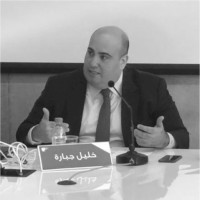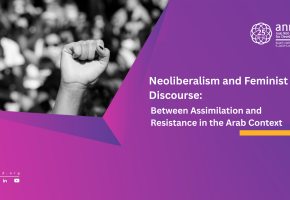

Lebanon and the IMF: A Crisis of Will - Dr. Khalil Gebara
Since October 2019, Lebanon has been engulfed in one of the most
severe and protracted economic and financial crises documented globally since
the mid-nineteenth century. Triggered in 2019 by the reversal of capital
inflows that had long sustained an unsustainable economic model, the crisis has
manifested as a devastating combination of sovereign debt default, a banking
sector collapse rendering deposits inaccessible, a currency that has lost over
98 percent of its value, persistent inflation decimating incomes, and a
catastrophic surge in poverty and unemployment. State institutions crumbled in
the initial years of the crisis, becoming unable to provide essential services.
Throughout Lebanon’s recent history, the International Monetary
Fund (IMF) has maintained a consistent presence, initially offering technical
assistance and conducting regular economic assessments through Article IV
consultations. However, the IMF’s role has shifted dramatically since the 2019
meltdown and Lebanon’s first-ever sovereign default in March 2020. It is now
viewed as the indispensable anchor for any potential financial rescue package,
holding the key to its own resources and to unlocking billions in aid pledged
by other international donors. This evolution from diagnostician to gatekeeper
has significantly raised the stakes of Lebanon’s engagement with the IMF.
This article reflects on the contentious relationship between the
IMF and Lebanon from the post-civil war reconstruction era to the present. It
argues that while the IMF consistently diagnosed Lebanon’s core structural
economic weaknesses and prescribed necessary reforms, the powerful vested
political and financial interests have prevented meaningful economic and
financial change. The cumulative failure to address fundamental imbalances over
decades ultimately precipitated the current catastrophic crisis, leaving
Lebanon trapped between the imperative of IMF intervention and a domestic
political structure incapable of fulfilling the required conditions.
Lebanon’s Unsustainable Postwar Political Economy
Following the end of the civil war, Lebanon embarked on a
reconstruction path that prioritized rebuilding infrastructure, often financed
through substantial borrowing, and aimed to attract foreign capital inflows.
Key strategies included maintaining high interest rates, leveraging banking
secrecy laws, and pegging the Lebanese Lira (LBP) to the US dollar.
The focus was overwhelmingly on developing the service economy,
particularly real estate and banking, often at the expense of investment in
productive sectors like industry and agriculture. While this approach
facilitated an initial period of recovery, reconstruction, and upward trending
capital-output ratios, it simultaneously embedded deep structural
vulnerabilities. Large fiscal deficits became chronic, fueled by reconstruction
spending, subsidies, and the high cost of servicing a rapidly growing public debt.
Concurrently, a persistent and large trade deficit emerged, reflecting a
reliance on imports financed by capital inflows rather than domestic
production. By the late 2010s, public debt averaged at least 150 percent of
GDP.
Throughout this period, the IMF engaged with Lebanon primarily
through technical assistance and its regular Article IV consultations, acting
as a critical watchdog. Its reports consistently flagged the mounting risks
long before the 2019 collapse. Pre-crisis IMF recommendations repeatedly
stressed the urgent need for sustainable fiscal adjustment to curb the high
public debt. Specific measures advised included broadening the tax base,
controlling expenditures by eliminating costly electricity subsidies, restraining
the public sector wage bill, and strengthening tax administration. The IMF also
pointed to the LBP’s overvaluation under the peg, which hampered export
competitiveness, and consistently highlighted the critical need for deep
structural reforms, especially in the electricity sector.
Broader concerns about weak governance and corruption were also
recurrent themes.
This era effectively normalized a fundamentally unsustainable
economic model. The reliance on large twin deficits, soaring public debt, and
volatile capital inflows became accepted features of the Lebanese economy. This
precarious situation was often masked by superficial stability indicators, such
as the fixed exchange rate and seemingly comfortable foreign exchange reserves
held by the Central Bank, bolstered by a pervasive narrative of unique Lebanese
“resilience.”
The political economy system, which benefited key stakeholders such
as commercial banks and politically connected elites, created strong incentives
for these groups to maintain the status quo. Consequently, despite clear
warnings from the IMF, World Bank, and other institutions, the perceived
short-term benefits of stability and the high political costs of challenging
these powerful vested interests led to continued inaction on fundamental
reforms.
International donor conferences, notably Paris II (2002) and Paris
III (2007), were convened to mobilize support and, more concretely, extend the
maturity of the unsustainable economic model. Lebanese governments pledged
significant reforms at these conferences, including privatization of state
assets, fiscal consolidation measures (VAT increases, subsidy cuts), and
governance improvements, in exchange for billions in grants and soft loans.
Donor assistance secured at Paris II and Paris III provided temporary fiscal
relief but failed to force a change in the underlying economic trajectory.
Based on confessional power-sharing and elite cooperation, the
post-war political model created a system where reforms threatening established
patronage networks or the distribution of economic rents were fiercely
resisted. At the same time, Hezbollah gradually integrated into this system,
becoming an active participant in the political economy and resisting reforms
as a result. This model began to crumble definitively in 2019 as the capital
inflows essential for financing the twin deficits and servicing the debt slowed
and reversed.
The Policy of Not Having an IMF Program
One episode that illustrates Lebanon’s relationship with the IMF
was during the preparation for the Paris II conference. The IMF did not endorse
Lebanon’s plan and, on the contrary, signaled its disapproval. This stance was
reflected in its October 2001 report on Lebanon, which emphasized the urgent
need for comprehensive fiscal reforms to reduce deficits and public debt
levels. Strengthening the financial sector’s resilience, enhancing
transparency, and restoring confidence in monetary policy were identified as
essential steps to stabilize the economy and safeguard the banking system. The
report also warned about the high exposure of commercial banks to government
debt and the Central Bank’s practice of financing government deficits within a
fixed exchange rate regime. Despite these warnings, Lebanon secured funding
from Paris II, primarily due to the late Prime Minister Rafik Hariri’s regional
influence and the broader geopolitical context.
The continuous policy of deferring necessary reforms has led the
international community to align firmly on the necessity of an IMF program as a
precondition for supporting Lebanon’s economic recovery and postwar
reconstruction. After the decision by Hassan Diab’s government to default on
its sovereign Eurobond debt for the first time in its history in March 2020,
Lebanon formally requested assistance from the IMF in May 2020. It prepared a
financial recovery plan in April of the same year. Negotiations with the IMF
did not progress further due to internal disagreement in Lebanon regarding
assessing and distributing the enormous financial sector losses.
The subsequent government, headed by PM Najib Mikati, reached a
Staff-Level Agreement (SLA) with the IMF in April 2022. This agreement outlined
a potential 46-month Extended Fund Facility (EFF) worth approximately $3
billion in Special Drawing Rights (SDRs). Crucially, however, the SLA was
explicitly conditional: final approval by the IMF Executive Board and the
disbursement of funds were contingent upon Lebanon implementing a series of
specific, critical reforms known as "prior actions." These prior
actions included a bank restructuring strategy, a bank resolution law, a bank
secrecy law reform, a Banque du Liban (BDL) audit, bank-by-bank evaluations, a
fiscal and debt strategy, approval of the 2022 budget, exchange rate
unification, capital controls legislation, and electricity sector reform.
Despite the urgency underscored by the IMF and the dire economic
situation, progress on implementing these prior actions has been exceptionally
slow and largely inadequate since April 2022. Exchange rate unification was
achieved through the central bank reducing money supply liquidity in the market
and working through a group of currency exchange dealers to manage the supply
and collection of US dollars and Lebanese Lira. The 2022 budget was approved
without a robust macroeconomic framework and inadequate financial data. The
Mikati government failed in multiple attempts to discuss and adopt a draft bank
resolution law or a draft bank restructuring law. Entrenched interest groups
once again succeeded in blocking any significant discussion related to these topics.
Current PM Nawaf Salam’s ministerial statement explicitly stated
its commitment to reaching a program with the IMF. During the IMF/World Bank
Spring 2025 meetings, the Lebanese delegation made it evident that the
political and monetary authorities are unified on the importance of reaching an
agreement with the IMF. The Salam government adopted a draft bank restructuring
law, and the Parliament has voted on the amendments to the bank secrecy law.
These measures could be framed as a sign of seriousness towards the
international community. Many additional actions are still required, such as
adopting a 2026 budget that goes beyond being a mere accounting exercise and
includes a comprehensive macroeconomic framework with clear measures to
stimulate economic growth without overburdening the formal private sector,
which is already strained by taxes. In contrast, the expanding cash economy and
informal sector are accumulating unprecedented illicit profits.
The Way Forward: Navigating Internal Resistance
Since the economic, financial, and fiscal collapse of October 2019,
one of the key unanswered questions has been whether Lebanon can recover
without an IMF program. Is there a way to put the Lebanese economy back on the
path of economic recovery, regenerate economic growth, reintegrate the country
back into global financial markets, earn the trust of international and
regional donors, and negotiate a settlement with Eurobond holders without an
IMF program?
In the Global South, skepticism towards IMF programs is prevalent,
particularly due to their perceived negative impacts. Many Latin American,
African, and Asia countries have had adverse experiences with IMF interventions
that have led to renewed debt crises, prolonged recessions, and widespread
social discontent. The IMF typically promotes an economic model that
prioritizes market liberalization, deregulation, and fiscal austerity, often
resulting in increased dependency on foreign capital and imports. Austerity
measures, such as spending cuts, tax hikes, and subsidy reductions, can reduce
social welfare programs and increase the cost of living. IMF policies often
prioritize macroeconomic stability over social equity, exacerbating income
inequality.
In Lebanon, however, opposition to IMF programs does not primarily
stem from social groups or civil society. There may be various reasons for
this, such as the weakening labor movement, which has been shaped for decades
by political and sectarian interests. What makes the Lebanese case intriguing
is that the primary group explicitly protesting and actively opposing a deal
with the IMF is the banking and financial elite.
Since 2019, Lebanon's central conflict has revolved around
distributing the substantial financial sector losses among the state,
commercial banks, and depositors. The IMF estimated Lebanon’s debt-to-GDP ratio
at 164% in 2024. The key issue is how much of these financial sector losses the
government would assume as debt. An IMF program requires that debt remains
manageable and sustainable. If the primary objective of commercial banks is to
emerge from the crisis unscathed or as “free riders,” then an IMF program is
certainly not the appropriate path.
Disclaimer:
This article was published as part of the
newsletter “IMF Policies: No Rule Fits All”. The views and opinions expressed
are those of the author and do not necessarily reflect the official position of
the Arab NGO Network for Development (ANND).
Recent publications

Neoliberalism and Feminist Discourse: Between Assimilation and Resistance in the Arab Context
